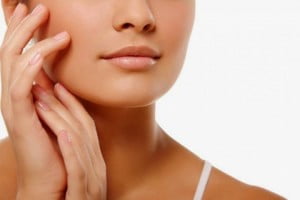Guide to Glycolic Acids
 Glycolic acids have become a household name in recent years. Glycolic cleansers, serums, and creams have taken the market by storm, with good reason. Popular glycolic acids have been tried, tested and proven to create significant improvement on the skin. What are glycolic acids? Naturally derived from fruit, this Alpha Hydroxy Acid is known for its ability to be used on most skin types with minimal risk and no down time. Known as the “lunchtime” treatment, patients are happy with the immediate improved appearance along with the long-term benefits.
Glycolic acids have become a household name in recent years. Glycolic cleansers, serums, and creams have taken the market by storm, with good reason. Popular glycolic acids have been tried, tested and proven to create significant improvement on the skin. What are glycolic acids? Naturally derived from fruit, this Alpha Hydroxy Acid is known for its ability to be used on most skin types with minimal risk and no down time. Known as the “lunchtime” treatment, patients are happy with the immediate improved appearance along with the long-term benefits.
What makes this peel so popular?
High percentages of patients see a visual improvement in the overall texture and tone of the skin immediately. This popular peel has been proven to aid in:
-
Visual pore reduction
-
Actinic Keratosis
-
Melasma
-
Acne scarring
-
Acne reduction
-
Normalization of Keratinization
-
Increased Hylaronic acid
-
Reduction of Comedones
-
Treatment of inflamed and non-inflamed lesions
-
Reduction of melasma
-
Assists with collagen production
-
Reduction of acne scars with the production of new, healthy cells
-
Elimination of dead skin and speeds up cellular turnover
-
Reduction of sun damage
How does it work and what to expect:
This common AHA can be used over the counter or, more powerfully and effectively, in your dermatology, cosmetic or plastic surgery office. The range of benefits are based on several factors: pH of the acid, delivery system of the acid, length of time on the skin, buffering agent, and frequency of use. When used in office, the skin is prepped with alcohol to strip any oil for better penetration. The acid is then applied to the skin. Once applied, the glycolic acid reacts with the upper epidermis, weakening the binding properties of the lipids that hold the dead skin together. Think of bricks and mortar: Once mortar is dissolved, the bricks can be removed. This reaction reveals live, glowing skin cells. The epidermis reveals overall hydration in the lower epidermal cells and the formation of healthy cells in the following month. During the procedure, you can expect mild tingling and itching followed by some redness and occasional peeling or scabs. Most often, expect to see lovely, glowing skin. We encourage monthly treatments for maximum results.
All glycolic acids are not created equal, educating yourself will be helpful in determining how much correction to expect and what type of glycolic acid is most appropriate for you. Always ask questions and seek treatment from licensed, experienced aestheticians or physicians. Consider consulting with Dr. Sobel to learn about the glycolic acid treatment best suitable for you.
– Mandy Stocker, Master Aesthetician, Anderson Sobel Cosmetic Surgery